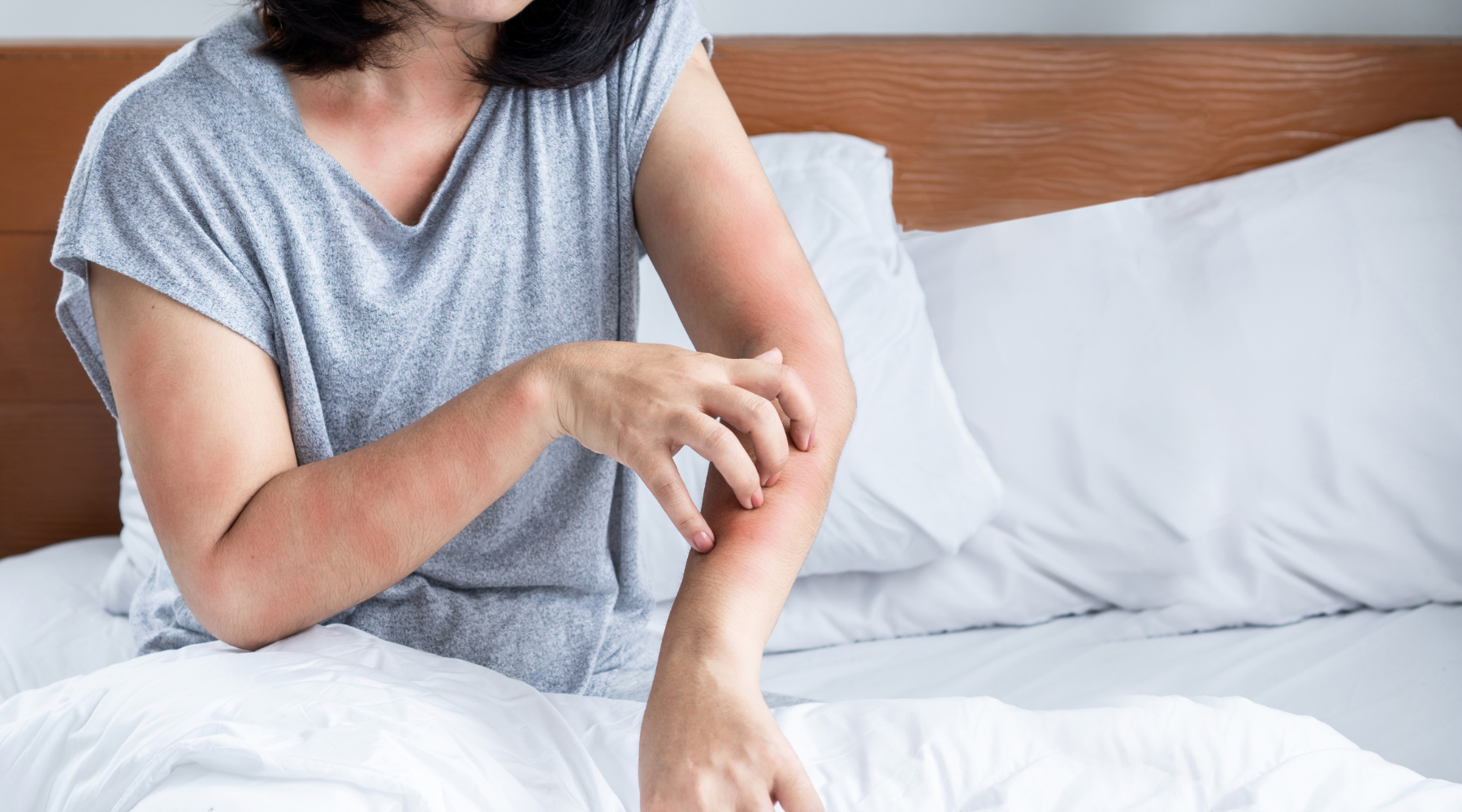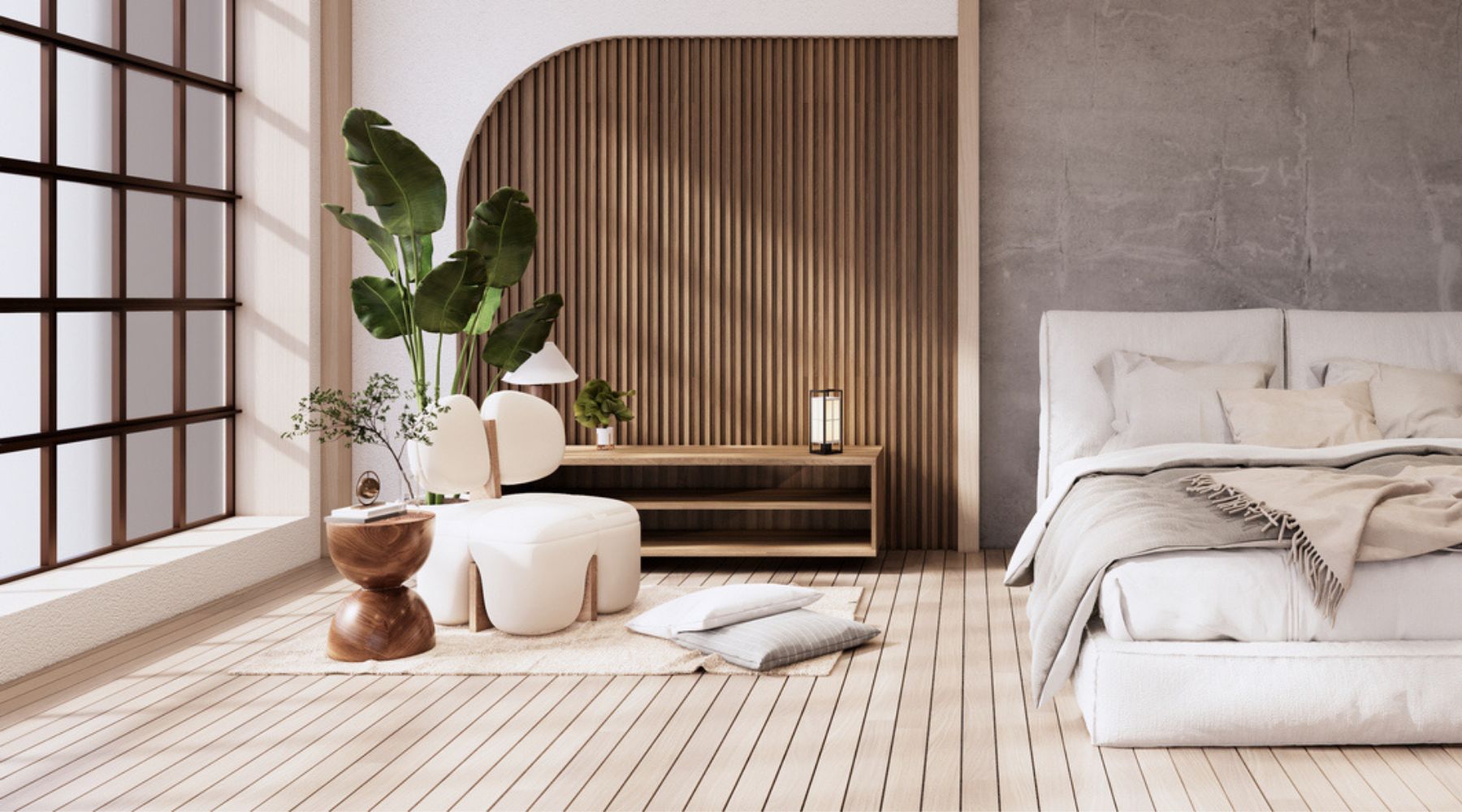
How Linen Supports Sensitive Skin: A Guide for Allergy Sufferers
Sleep without irritation—see how organic linen’s natural antibacterial and hypoallergenic qualities make it ideal for allergy-prone sleepers.
What Causes Bedding Allergies and Skin Conditions?
Allergies in bedding are caused by a buildup of microorganisms such as microbes, bacteria, and fungi—typically too small for the eye to see, but with an outsized effect on our sleep quality. Unwashed, damp bedding is also a haven for dust mites, which thrive in warm, humid environments and feed on dead skin cells. “Dust mite allergies” are not usually caused by the mites themselves but by their droppings and shed body parts, which contain proteins that trigger allergies.
Symptoms of dust mite allergies include sneezing, a runny nose, an itchy throat and coughing. But the most common bedding-related illnesses are skin conditions such as eczema, dermatitis and psoriasis. Though they are not always caused by allergies, exposure to allergens or harmful chemicals can make them worse. People with allergies or skin conditions become locked in a vicious cycle: their sleep is affected, which lowers their immune barriers, which worsens their condition.
Thermoregulation for Allergen-Free Bedding
Since allergens tend to occur in warm, humid environments, it’s essential to use bedding that regulates temperature and wicks away moisture. Organic linen bedding is the gold standard in thermoregulating bedding, thanks to the properties of the flax plant from which it is made.
Seen under a microscope, linen has thousands of tiny pores along its length, which are part of the natural cellular structure of flax. When flax is made into linen, these pores act as a conduit for air and moisture, keeping you cool and dry at night.
In 2014, the University of Lorraine, France conducted a comfort study comparing flax to three other bedding textiles: cotton, polyester, and viscose. Linen earned the top score for air permeability and breathability: the ability to let perspiration pass through. They also tested moisture-wicking capabilities by studying textiles’ reaction to a drop of liquid: linen absorbed it quickly and distributed it over the largest surface area, promoting better wicking.
Anyone who has worn a linen shirt or dress in the summer heat will have felt this for themselves: linen channels heat away from the body, resulting in a cool and comfortable feeling. Without heat or moisture, allergens can’t thrive in the way they do in warm, damp conditions.
Of course, we’re assuming that you’re washing your bedding every two to four weeks—including your comforter, if you have one. For more on how to care for your bedding, check out our dedicated guide.
Smooth Linen for Skin Conditions
Doctors typically recommend soft, smooth fabrics for skin issues, and to avoid rough and/or synthetic fibers. Given linen’s reputation for being scratchy, you might think that it wouldn’t be appropriate for allergy sufferers—but that couldn’t be further from the truth.
All linen is definitely not created equal. After being harvested, flax undergoes a process known as scutching, which separates the strands into short and long fibers. Short fibers are used for upholstery, sacking, and paper products, as well as more robust clothing such as jackets—these can feel scratchy. But linen bedding is made from long fibers, which are fine and feel smooth against your skin.
It’s also important that your linen bedding is free from lignin. Lignin is a natural polymer that supports the flax stem and makes it rigid—but if it isn’t removed, it can make linen feel stiff and scratchy, causing skin irritation. Lignin can be removed from bedding in one of two ways: with chemicals, or with natural enzymes. Chemical treatments involve dangerous, corrosive alkalis such as sodium hydroxide—also known as caustic soda. These, and other chemicals used in lignin removal, can cause health problems down the line—including skin conditions, which is what you’re trying to avoid in the first place!
At The Modern Dane, we garment-wash our organic linen bedding using enzymes, so that it’s both safe and super soft when it reaches you. Try before you buy; order our organic linen swatches and feel for the softness yourself.
Organic Linen Bedding: Free From Harmful Chemicals
Studies show that chemicals are more likely to result in allergies than natural materials. European Flax is an organically grown, all-natural product that requires no artificial irrigation, fertilizers, or pesticides during growth—rainwater is enough. Flax linen has been tested in medical environments and is recommended to patients with sensitive skin, as it will not exacerbate their condition.
Contrast this with cotton, and the difference could not be more stark. Cotton fields account for 4.7% of global pesticide sales, despite covering only 2.4% of cultivated land. Pesticides used in cotton production include glyphosate and 2,4-dichlorophonoxyacetic acid—both flagged as possible carcinogens by the International Agency for Research on Cancer—and deltamethrin, which has been linked to dermatitis.
Artificial dyes can contain Azo compounds (known allergens), rash‑inducing heavy metals, and formaldehyde, which can irritate the skin at unsafe levels. At The Modern Dane, we use nontoxic, biodegradable dyes in compliance with our OEKO-TEX certification.
With so many greenwashing claims being thrown around, it’s hard to know whether the bedding you’re buying is safe. Thankfully, certifications—such as OEKO-TEX—can help. The OEKO-TEX Association has 17 independent textile research and testing institutes worldwide; companies must submit their entire product, including fastenings, to receive certification. Scientists then test it for over 1,000 harmful substances, including pesticides, colorants, and heavy metals. Plus, certification is only valid for one year, so you can be safe in the knowledge that anything you buy has been tested recently. All products at The Modern Dane are certified with the OEKO-TEX Standard 100 Class I: the safest class that’s suitable for everyone, including babies.
Have you slept on organic linen bedding? How does it compare to other bedding you’ve tried? Let us know on Instagram, Pinterest, Facebook or Twitter!








2 comments
Our pleasure, Sophia! We’re glad you found it helpful. Than you for reading along.
The Modern Dane
Thanks for the research.
Sophia
Leave a comment
This site is protected by hCaptcha and the hCaptcha Privacy Policy and Terms of Service apply.